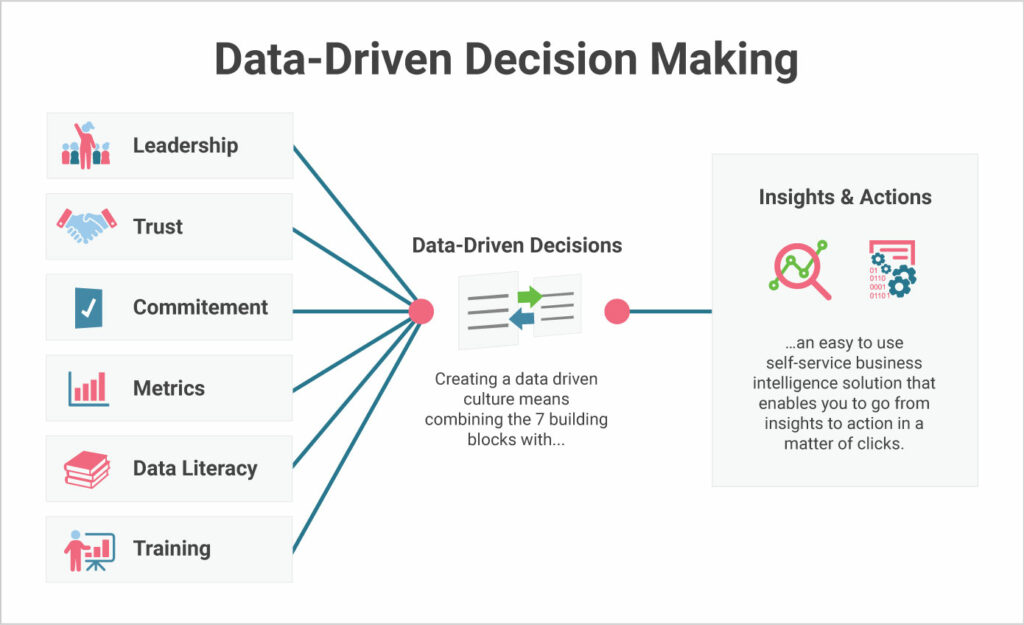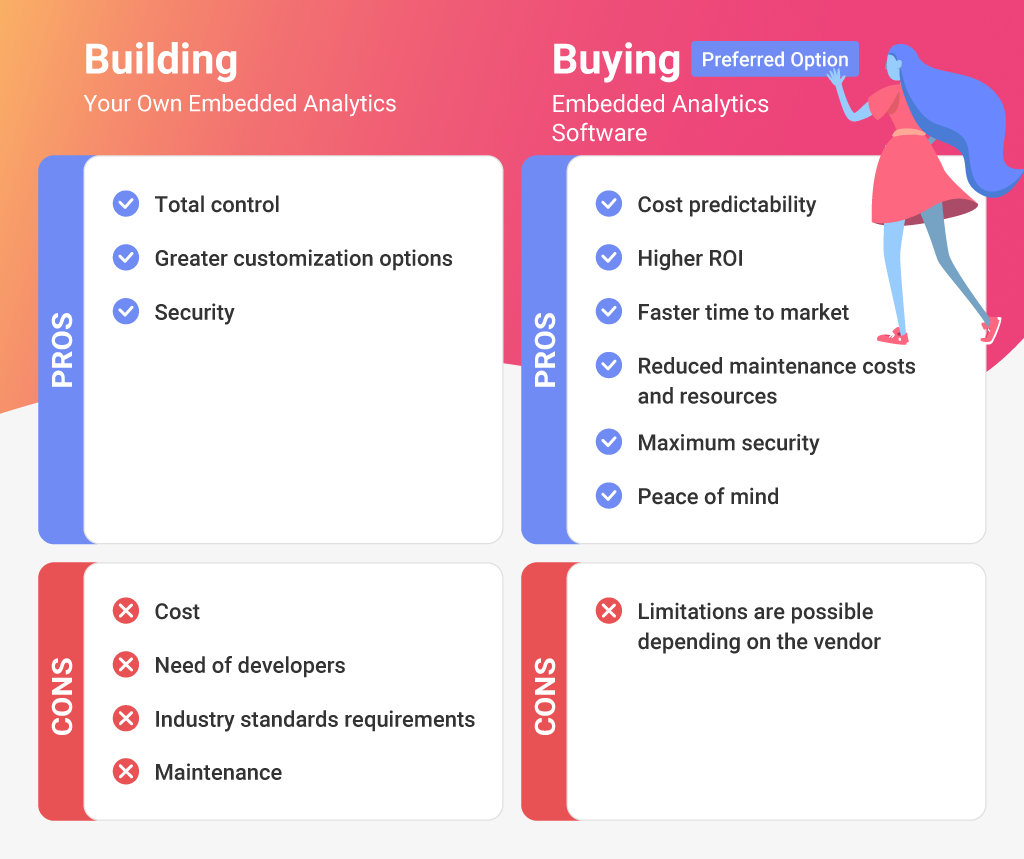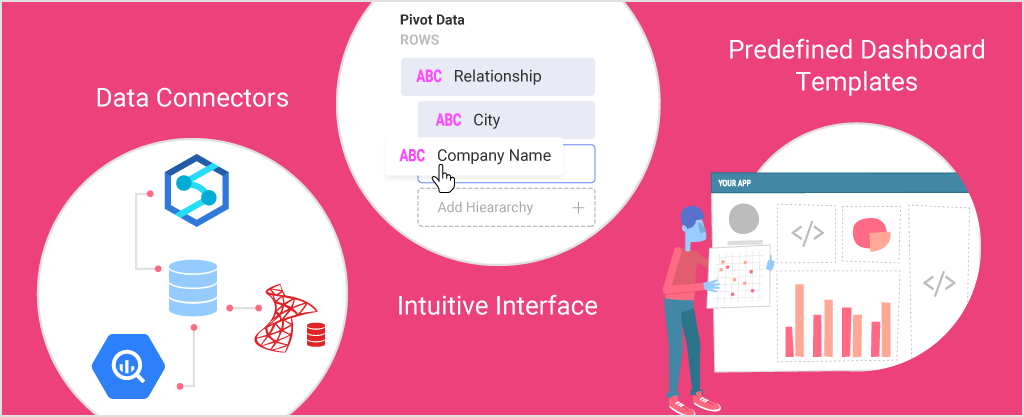
Scriptly Helps Pharmacies Identify Trends in Real Time with Reveal
The real value of embedded analytics is how it strengthens products and business outcomes. It shortens development cycles, cuts costs, and keeps analytics inside the workflow where users need it. The biggest payoffs are higher adoption, predictable ROI, and new revenue through monetization. With SDK-first integration, white-label control, and AI-powered insights, embedded analytics delivers scale, flexibility, and a lasting competitive advantage.
Executive Summary:
Key Takeaways:
Software leaders are under pressure to deliver more value inside their products. Users expect analytics that feel instant, intuitive, and built into their workflow.
That’s where the embedded analytics benefits stand out. They go beyond dashboards to influence adoption, retention, and revenue, directly inside the product experience.
The market shift reflects this need. Analysts project the embedded analytics market will exceed $55 billion by 2030, fueled by AI-powered tools and widespread SaaS adoption. In 2025, 81% of analytics users will already rely on embedded solutions.
For product leaders, the message is clear: delivering analytics isn’t optional. Doing it well, natively, securely, and at scale is now part of the competitive baseline.
In this article, we’ll unpack the embedded analytics benefits that drive product growth, user engagement, and smarter decisions. We’ll also show how modern, SDK-based solutions help teams overcome the limits of traditional BI tools.
Traditional enterprise BI forced users into separate portals and delayed access to insight. That slowed decisions and made analytics feel like an afterthought. Product leaders now recognize that decisions lose value when they arrive late or are disconnected from the workflow.
This is where the embedded analytics benefits stand out. By bringing insights into the exact place users work, analytics becomes part of the product experience. Users act faster and with more confidence because they never need to leave the application. The embedded analytics advantages include reducing friction, improving trust in data, and aligning analytics with how people actually use software.

Research supports this shift. In 2025, 20.2% of customers listed better decision-making as their main reason for adopting embedded analytics. Real-time analytics and contextual insights matter more than volume of data.
The philosophy is simple: deliver insight at the exact moment a choice is made. Where traditional BI separates data from action, embedded analytics integrates insight into the workflow. Contextual decisions become faster, more accurate, and more relevant to the task at hand.
Embedding analytics in this way empowers SaaS products to foster a data-driven culture. Users rely on facts instead of guesswork, and product value increases with every interaction. For CTOs and product leaders, the outcome is clear: contextual, in-workflow analytics drives adoption and strengthens competitive position.
Data is more useful when it is easy to see and explore. That is one of the most direct embedded analytics benefits: turning raw numbers into clear, interactive dashboards. Instead of forcing users to parse static reports, products can provide charts, maps, and filters that adapt to the way people ask questions.
The embedded analytics advantages become obvious when users engage with visualizations in context. A sales manager can drill into regional performance on a map. A CFO can filter expense categories without exporting to spreadsheets. These experiences make analytics practical and valuable inside the product.
The shift toward visualization is measurable. According to the Reveal Embedded Analytics Statistics report, 47% of users rely on BI for productivity tracking, while 42% use it for trend analysis. That adoption proves that visual and interactive reporting is more than presentation. It drives better execution in day-to-day work.
Modern embedded BI platforms now include AI-driven exploration and predictive analytics, giving users the ability to test scenarios or spot trends without waiting on analysts. These embedded analytics features let decision-makers move beyond historical reporting and see where their business is heading next.
By embedding rich data visualization capabilities, software products provide more than a dashboard. They give users interactive tools that deliver clarity, encourage exploration, and improve the overall product experience.

Analytics should never feel like an external tool. When dashboards open in a separate portal or sit in an iFrame, users sense the disconnect. That hurts adoption and undermines product value. The true embedded analytics benefits appear when analytics looks, feels, and behaves like a natural extension of the software itself.
The embedded analytics advantages start with control. A strong integration framework allows full white-labeling, so every chart, dashboard, and filter matches the product’s brand and UX. With white-label analytics, the experience is seamless. Users stay focused on insights rather than navigating between inconsistent interfaces.
Integration also depends on flexibility. An embedded SDK gives product leaders the ability to decide how analytics is delivered, how it scales, and how it aligns with security models. Reveal’s SDK-first approach, for example, shows how developers can integrate analytics directly into the codebase without relying on fragile workarounds.
When analytics is integrated at this level, it becomes part of the workflow instead of a detour. For SaaS products, that means fewer adoption hurdles, smoother onboarding, and analytics that feel built-in rather than bolted-on.
Analytics adoption rises when it feels like part of the product experience. External portals or separate BI tools often go unused because they disrupt the workflow. When analytics is embedded directly, users interact with it naturally, as they would with any other feature. That is one of the clearest embedded analytics benefits.
The embedded analytics advantages extend beyond convenience. Adoption grows when dashboards are self-service, interactive, and aligned with the product’s logic. Role-based dashboards allow users to see only the data relevant to them, which improves both engagement and satisfaction.
For SaaS products, this alignment is even more important. Embedded analytics for SaaS companies makes analytics feel inseparable from the platform itself. Users explore data without barriers, which increases stickiness and long-term product value.
When analytics is treated as a core product capability, adoption follows. Users don’t need to switch tools or request custom reports. They stay in your application, engage with the data, and gain value in context. That constant interaction is what keeps products competitive in a crowded market.

Building analytics from scratch drains resources. On average, a custom solution costs more than $350,000 and takes up to seven months to deliver. During that time, the engineering focus shifts away from the core product. For SaaS leaders, that tradeoff is expensive and slows down innovation.
This is where the embedded analytics benefits become clear. Instead of dedicating months to development, teams can integrate a proven solution and deliver dashboards within weeks. The embedded analytics advantages include faster releases, predictable costs, and less technical debt over time.
Datacom, Australasia’s largest homegrown tech company, faced these challenges in its internal Zeus portal. Every new dashboard required coding changes and developer time. That bottleneck reduced productivity and slowed delivery. After embedding Reveal, Datacom’s engineers and non-technical staff could create their own dashboards without coding or training. The result was higher productivity, faster turnaround, and less strain on development resources.
By replacing complex, resource-heavy builds with embedded solutions, organizations see ROI much sooner. Engineers focus on improving the product, while business users gain direct access to the insights they need. The outcome is faster delivery, lower costs, and a measurable return on investment.
Analytics can drive more than efficiency. It can also generate direct revenue. That is one of the most overlooked embedded analytics benefits: transforming data from a cost center into a growth engine.
The embedded analytics advantages include the ability to package advanced dashboards and insights as premium features. SaaS providers can charge more for predictive analytics, role-based dashboards, or department-specific reporting. This approach turns analytics into a differentiator and a clear revenue driver.
The shift is already happening. According to the Reveal Embedded Analytics Statistics report, 31.4% of organizations use embedded analytics to generate higher revenue. The trend shows that analytics monetization is no longer limited to enterprise BI, but is part of SaaS product strategy.
Different models exist for data monetization. Some providers offer analytics modules as add-ons. Others integrate them into higher pricing tiers. Many create premium packages with real-time and self-service analytics capabilities. Each approach builds stickiness while increasing average revenue per user.
For SaaS leaders, monetizing embedded analytics strengthens both product value and recurring revenue. Users pay more for insights that help them work smarter, while the product itself gains a competitive edge. The outcome is stronger retention and measurable growth.
A true data-driven culture requires more than reports delivered to analysts. It depends on giving every user the tools to access and explore information directly. That is one of the most important embedded analytics benefits: expanding the reach of data across the entire organization.
The embedded analytics advantages appear when analytics is built into the product workflow. Users gain self-service dashboards and interactive reporting without relying on development teams. Engineers no longer spend time on ad hoc requests, while non-technical staff can create their own views with ease.
Self-service access fosters a stronger data-driven culture. Role-based dashboards provide context while maintaining security. This balance encourages users to explore trends, share insights, and make informed choices. As adoption spreads, data becomes part of everyday work instead of an isolated activity.
When analytics is embedded into the applications people already use, it becomes a habit. That habit is what shifts culture. Users rely on facts, teams align on metrics, and decisions become more consistent. Embedded analytics enables this cultural shift by making insights both accessible and trusted.
Traditional dashboards describe what has already happened. AI shifts analytics toward what comes next. This is one of the most valuable embedded analytics benefits: transforming analytics from reactive reporting to proactive decision support.
The embedded analytics advantages are clear when automation and machine learning generate insights without manual effort. Predictive analytics, anomaly detection, and automated alerts help users act on issues before they grow. This reduces delays and keeps businesses ahead of change.
The demand for AI in analytics is rising fast. According to the Reveal Embedded Analytics Statistics report, 73% of tech leaders plan to expand AI adoption in 2025. That momentum shows how important automation and AI-powered embedded analytics have become for competitive software products.
With AI-powered analytics, dashboards deliver more than numbers. They surface machine learning insights that users can trust. Automated insights point out trends, exceptions, and risks in real time, without requiring deep technical knowledge.
By embedding this capability, products provide guidance as well as visibility. Users receive answers in the moment, not hours later. For SaaS leaders, the result is more accurate forecasting, smarter operations, and higher user confidence in the product.

In crowded SaaS markets, features are easy to copy. What sets products apart is how well they help users make decisions. That is where the embedded analytics benefits deliver a real competitive edge.
The embedded analytics advantages extend beyond dashboards. By keeping analytics inside the workflow, products deliver value at the exact point of need. Users stay engaged, trust the product more, and are less likely to look for alternatives.
Legacy enterprise BI tools were built for analysts, not product adoption. They remain important for internal reporting, but they cannot serve as differentiators in customer-facing applications. Embedded analytics changes that dynamic by making insight a visible part of the product itself.
For SaaS leaders, this shift is critical. When analytics feels like a seamless capability instead of a bolt-on tool, the product competes on more than features. It competes on outcomes. That advantage strengthens retention, drives adoption, and helps products stand out in markets where every other capability feels the same.
Scaling a product should not introduce delays or degrade performance. Yet many analytics add-ons create bottlenecks as user counts grow. One of the most important embedded analytics benefits is the ability to expand without breaking the experience.
The embedded analytics advantages appear when platforms support multi-tenant architecture, elastic scaling, and role-based dashboards. This combination gives SaaS providers confidence that analytics can grow alongside the product. Whether serving hundreds or thousands of users, performance and responsiveness remain consistent.
Integration also plays a role in scalability. Products must connect with diverse data sources and deliver insights in real time. A flexible API-driven model ensures analytics adapts to new environments and technologies without costly rebuilds.
Embedded analytics is also a key step in modernization. Legacy systems often block growth with rigid templates and limited scale. Embedded analytics in app modernization removes these limits by aligning analytics with modern infrastructure. The result is a solution that is cloud-ready, flexible, and able to support growth over time.
For SaaS leaders, scalability in analytics is not a technical detail. It is a competitive requirement. Products that scale without bottlenecks meet customer demand faster, support broader adoption, and maintain user satisfaction at every stage of growth.
The journey through the embedded analytics benefits shows a clear pattern. Products succeed when analytics is integrated, branded, scalable, and AI-driven. They fail when analytics sits outside the workflow, slows decisions, or drains development resources.
Reveal brings these advantages together in one platform. Built with an SDK-first approach, it integrates directly into your application without fragile iFrames. Full white-label control ensures dashboards match your product’s design. AI-powered insights provide predictive and automated guidance in real time. Fixed pricing makes ROI predictable as adoption grows.
With Reveal, you get:
For SaaS leaders, the choice is straightforward. Reveal turns analytics from a feature request into a competitive advantage. By embedding intelligence directly into your product, you deliver more value to your users, strengthen retention, and grow revenue.
Back to Top